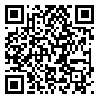Volume 7, Issue 1 (6-2020)
vacres 2020, 7(1): 25-37 |
Back to browse issues page
Download citation:
BibTeX | RIS | EndNote | Medlars | ProCite | Reference Manager | RefWorks
Send citation to:



BibTeX | RIS | EndNote | Medlars | ProCite | Reference Manager | RefWorks
Send citation to:
Lundstrom K. The Potential of Self-amplifying RNA Vaccines for Infectious Diseases and COVID-19. vacres 2020; 7 (1) :25-37
URL: http://vacres.pasteur.ac.ir/article-1-202-en.html
URL: http://vacres.pasteur.ac.ir/article-1-202-en.html
PanTherapeutics
Abstract: (6278 Views)
In addition to conventional vaccine development for infectious diseases, nucleic acid-based vaccine approaches have recently been presented as serious alternatives to previously used strategies based on live attenuated virus particles and subunit vaccines. Particularly, RNA-based vaccines have proven attractive. In this context, immunization with messenger RNA (mRNA) has provided strong immune responses and protection against challenges with lethal doses of pathogenic viruses in vaccinated animals. Alternatively, the efficient RNA replication mechanism provided by self-amplifying RNA (saRNA) viruses has been utilized. Enhanced immune responses with reduced doses required for immunization has been obtained in comparison to conventional mRNA administration. The rapid spread and destruction caused by the COVID-19 pandemic has substantially accelerated the demand for the development of robust and efficient vaccines against SARS-CoV-2. Both mRNA- and saRNA-based COVID-19 vaccine candidates are currently in human clinical trials.
Keywords: RNA vectors, RNA replicons, RNA vaccines, immune responses, protection against pathogens, coronaviruses, COVID-19
Type of Study: Review article |
Subject:
Vaccine development, efficacy and safety evaluation
Received: 2020/07/17
Received: 2020/07/17
Send email to the article author
| Rights and permissions | |
 |
This work is licensed under a Creative Commons Attribution-NonCommercial 4.0 International License. |

This work is licensed under a Creative Commons Attribution-NonCommercial-NoDerivatives 4.0 International License.






